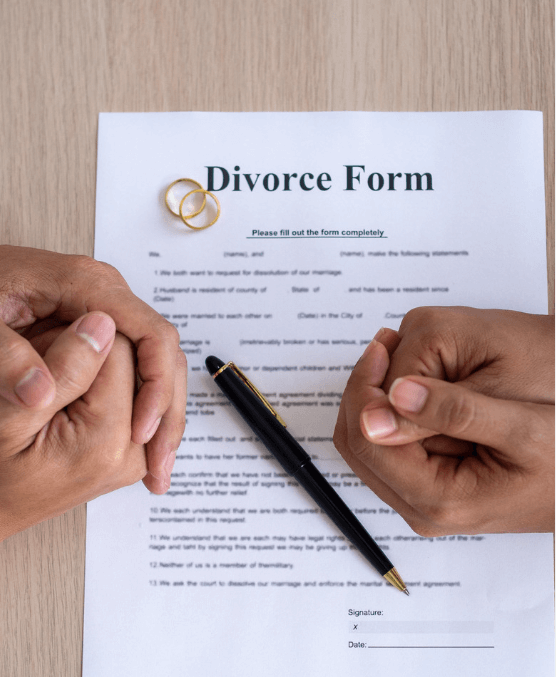
Hi, we all know that marriage is a legal and emotional union between two people, which is made for lifelong commitment. However, not all marriages are successful and when partners separate, separation often becomes the first step to end the relationship.
In many jurisdictions, the concept of “automatic divorce” after long separation exists as a legal remedy for ending a marriage where the couple has lived apart for a significant period of time.
We will now discuss the legal framework, social implications, and personal consequences of automatic divorce after long separation, as well as how this varies in different legal systems. Let’s get started.
Before going into the topic of automatic divorce, it is important to understand the difference between separation and divorce.
Separation refers to situations where a couple decides to live apart but remain legally married. Separation can be voluntary (by mutual agreement) or involuntary (due to circumstances such as work or health).
Divorce, on the other hand, is the legal dissolution of a marriage, marking the formal end of the relationship and the legal obligations associated with it.
What is automatic divorce?
Automatic divorce, sometimes referred to as “divorce by long separation”, is a legal concept whereby a marriage can automatically dissolve after a certain period of separation without the need for a formal petition for divorce.
Essentially, if a couple has been separated for a sufficient period of time, the law may deem the marriage to have broken down beyond repair and allow either party to dissolve the marriage without having to prove fault or contest the divorce.

What is the legal basis for automatic divorce?
In most jurisdictions, divorce laws require certain conditions to be met before a divorce is granted. These usually include reasons such as adultery, cruelty, abandonment or unresolved differences.
However, in the case of automatic divorce, long separation serves as the primary basis. The idea is that if two people have not lived together as a couple for a long period of time, the marriage has effectively ceased to exist and the legal bond no longer serves any purpose.
Separation as a Ground for Divorce: Many jurisdictions recognize separation as a valid ground for divorce. In this case, the length of the separation period is crucial. The required period varies from country to country but is usually between two and five years. For example, in the UK, a couple must have lived apart for at least two years (with mutual consent) or five years (without mutual consent) to be eligible for a divorce based on separation.
Mutual Consent vs. No-Fault Divorce: In some countries, long separation divorce requires mutual consent. Both parties must agree that the separation has led to an irreparable breakdown of the marriage. However, in “no-fault” divorce jurisdictions, the duration of the separation itself is sufficient grounds for divorce, regardless of the consent of the other party.
What is the period of separation required for automatic divorce?
United States: In the United States, divorce laws vary by state. Some states have “no-fault” divorce provisions, where a long separation (often two years or more) can be grounds for divorce.
For example, in Virginia, if the spouses have been separated for one year (or six months with a separation agreement and no minor children), the court may grant a divorce. Other states, such as New York, require a one-year separation with an agreement or judicial separation.
United Kingdom: In the United Kingdom, two years of mutual consent or five years of separation without consent is sufficient for automatic divorce.
This is a common way to pursue a “no-fault” divorce, meaning neither party needs to prove fault.
Canada: In Canada, divorce laws allow no-fault divorce if the spouses have been separated for at least one year.
It is the most common cause of divorce in the country and the separation period begins when one or both spouses decide to end the marriage.
Australia: Australian law follows a similar policy, allowing couples to divorce after a one-year separation period, provided there is no reasonable prospect of reconciliation. This approach reflects the country’s commitment to no-fault divorce.

End the automatic divorce process
Filing for Divorce: Even in the case of automatic divorce after a long separation, one of the spouses must file a petition for divorce.
However, the process is simplified as they only need to show that they have lived apart for the required period.
Evidence of Separation: To prove separation, the spouse filing for divorce may need to show evidence, such as separate residences, financial independence, and lack of cohabitation.
In some cases, cohabiting for a short period of time during a separation (eg, for attempted reconciliation) does not reset the duration of the separation.
Court approval: If the duration of separation is proved, the court may grant divorce without detailing why the marriage broke down. This eliminates the need for a lengthy and contentious legal battle.
Settlement of Matters: Even in an automatic divorce, the couple must settle matters relating to property division, child custody and spousal support.
These issues can be resolved through negotiation or mediation, and the court’s role is to reach an agreement or, in contested cases, decide in the best interest of the parties involved.
Pros and cons of automatic divorce after long separation
Benefits:
Simplicity and poetry: Automatic divorce after long separation makes divorce process easier.
The couple can go about their lives without the need for the couple to join or a long court battle.
Creative Reduces: The self is necessary for some reason, so the self is being opposed between spouses.
This can lead to a more amicable settlement and closer to a healthier relationship after divorce, especially when children are involved.
Personal action: When a marriage has ended in fact but not in law, automatic persons go back to their judgment.
This can be especially important in cases where one spouse is uncooperative or may pay the milita in the divorce.
Trouble:
Lack of control: For some, automatic divorce can feel like a loss of control.
If a person hopes for reconciliation or thinks that you can, the scenario of automatically granting divorce may unfold.
Financial Disputes: While in divorce proceedings, spousal and spousal support issues need to be resolved.
Automatic divorce does not guarantee a fair financial settlement and unresolved disputes may still require court intervention.
Cultural and Cultural Organizations: Divorce is widely discouraged or stigmatized in some cultures and religions.
Self-segregation may clash with cultural or religious rights, which may result in individuals’ social or societal formations.
When couples live apart for long periods of time, maintaining the legal bond of marriage can seem unnecessary and even burdensome. By allowing divorce without having to prove fault or engage in lengthy court battles, automatic divorce offers a practical solution for people looking to move on with their lives.











